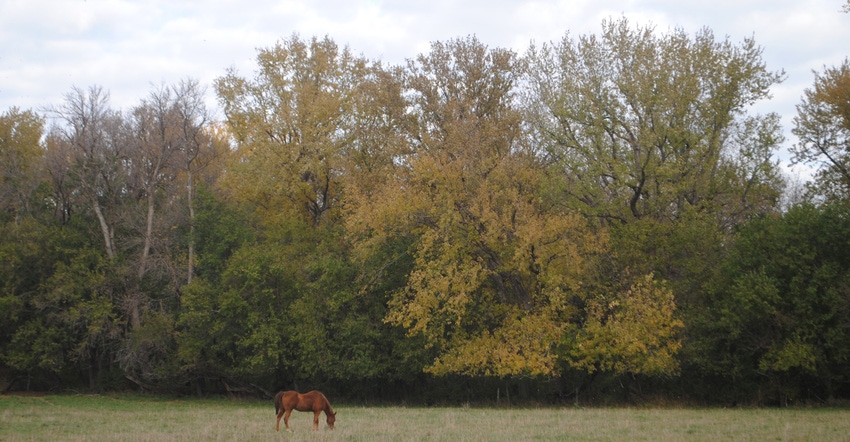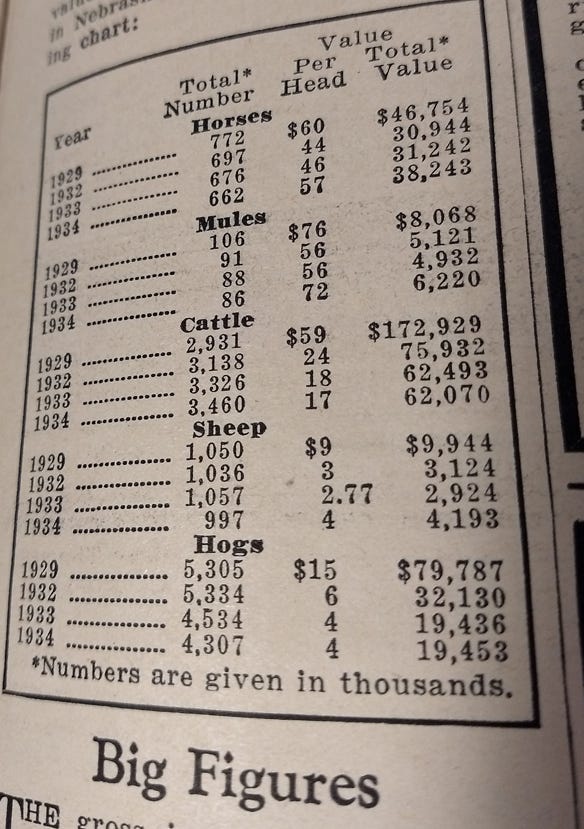
Editor’s note: In our column, Then and Now, we look at farm technologies, strategies, equipment, livestock, crops and treatments from our back issues of Nebraska Farmer, and discuss how things have changed and how they have stayed the same.
By the mid-1930s, there was a lot going on down on the farm. Much of the nation was gripped in the Great Depression, the Plains states were being hit with extreme drought, and a major transition was underway from horse-drawn farm power to tractors.
The cover story of the March 3, 1934, issue of Nebraska Farmer covered different conveniences and landscaping beauty of the modern farm homes of the day. Inside the issue, there were several pages of coverage of President Franklin D. Roosevelt’s New Deal ag programs, such as the Agriculture Adjustment Act (AAA), which was passed during the Great Depression and was designed to boost agricultural commodity prices by reducing surpluses.
But the story that caught our attention in this issue, across from a farm marketing report written by business and markets editor Gilbert Gusler, was a news release from USDA citing the numbers of livestock reported over a multiyear period in Nebraska.
By looking at the table provided with this short article, you can notice that almost every category of livestock had its highest valuation in 1929, before the Great Depression set in, with subsequent years declining substantially. The pain of drought and depressed farm prices across the country was being felt in almost every corner of the Plains and the nation by 1934.
Nebraska numbers
Take cattle numbers, for instance, in Nebraska. In 1929, there were 2.931 million head of all classes of cattle, with a valuation of nearly $173 million, averaging about $60 per head. By 1934, the report showed 3.46 million head, but the average value of each animal was only $17, for a total valuation of just over $62 million. That’s a loss of valuation of $111 million, and the total herd was larger by about 500,000 head.
Hog numbers in 1929 were about 5.3 million head, valued at about $15 per head. Five years later, the total herd was about 4.3 million, and each animal was worth only $4 — or a loss in value on a per-head basis of about 73%.
But one of the other factors we noticed in this report was that the number of horses and mules were reported at the top of the livestock table. That’s how important those numbers were to agriculture during that time.
Horse-drawn decline
But tractors were coming onto the scene more and more. There are reports that credit the construction of the first steam-powered farm tractor to Henry G. Stone, a Grand Rapids, Mich., man who built the machine in 1860. Steam tractors became prevalent in agriculture across the country until they were eventually phased out by less expensive and lighter gas-powered tractors.
For instance, in the 1934 Nebraska Farmer, there is an ad for John Deere two-cylinder tractors, including the Model D, which the ad says is for the heavier farm jobs such as pulling a 3-bottom or 4-bottom plow, or a 16-foot combine.

NUMBERS GAME: This USDA table from the March 3, 1934, issue of Nebraska Farmer shows the deep decline in valuation of Nebraska livestock from 1929 to the Great Depression in 1934, but it also shows the decline in numbers of horses and mules being used on the farm, as power transitioned to tractors.
The JD General Purpose Standard Tread tractor planted and cultivated three rows at a time and could pull a 2-bottom plow with a straight center hitch. JD also listed a Wide Tread tractor and an orchard tractor, both built low to the ground, able to pull a 2-bottom plow and with rear wheels protected with fenders. All of these tractors had steel wheels.
McCormick-Deering ran an ad in the same magazine, offering horse-drawn versions of a rotary hoe and soil pulverizer. The ad also made note of a No. 9 tractor disk harrow and a Little Genius plow that was perfect for a Farmall 30 tractor. “There are specific plows and tillage tools to meet your requirements,” whether that would be horse-drawn or tractor, the ad noted.
Equine still important
With that transition underway from horse-drawn equipment, the horse and mule numbers tell the tale. In 1929, there were 772,000 horses in Nebraska, worth about $60 per animal. By 1934, the number had dropped to 662,000 head, but each was still valued at about $57.
There were 106,000 mules in the state in 1929, worth $76 each. Five years later, the number had declined to 86,000, valued at $72 each. This was the beginning of the long slide for horse and mule numbers, driven entirely by the transition from horse-drawn to tractor-pulled equipment on the farm.
As tractors became more affordable, and more manufacturers got into the market, the Nebraska Tractor Test Laboratory in Lincoln tested a representative of each model, to prove their reliability and their claims for horsepower.
This was a huge leap forward for tractors, and the testing lent credibility to the claims of many of the manufacturers. So, farmers trusted tractors more because they were being tested. Thus, their acceptability continued to increase into the 1940s and 1950s, at the expense of the horse and mule.
Nebraska is still populated today with a large number of horses, many of them ranch horses that help in working cattle across the Plains. In 2017, USDA reported 48,596 horses and 2,446 mules, burros and donkeys in the state.
Although horses and mules no longer play a huge role in powering farm equipment across the fields, they continue to play a crucial role in agriculture, and they will always have a position of importance in the agricultural heritage of the country and the state.
About the Author(s)
You May Also Like






